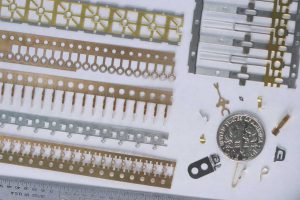 Metal stamping is the process of using punching machines and molds to create punching separations or plastic deformations in order to meet the requirements of production technology for parts.
Metal stamping is the process of using punching machines and molds to create punching separations or plastic deformations in order to meet the requirements of production technology for parts.
What is stamping?
Stamping is an industrial technology that uses mechanical stamping to form sheets and plates with different thicknesses. The original material thickness does not change during the manufacturing process. Stamping is widely used for manufacturing engineering, whether it’s for cutting or special surfaces, three-dimensional components.
Metal that is easily deformable
Metal is a strong material, and it’s often used in structural members that require strength. We also discovered that metal deforms when its tensile stress is exceeded. Metal has plasticity. We call this plastic deformation. Gold is the metal with the highest deformability. Metal is formed using the plastic deformation properties of metal.
How can we deform this metal that appears to be strong? You will need die steel, which is stronger than metal. Mold steel is formed into upper and bottom molds according the desired shape. The upper and lower molds are then opened, the raw materials placed and the molds fixed to a device known as a punch. The punch will provide the necessary force for the forming process. Drive the mold upwards and downwards to close and unlock the mold. The material is formed by closing the mold, then opening it to let the raw materials enter and leave. A stamping system is made up of the punch, mold and raw materials. Even very strong metals will deform when under pressure.
Stamping Process – A Brief Description
Stamping is a process that involves punching, bending, and drawing. As an example, consider the key that is used daily. Place the sheet onto the female mold, then use a punch on it to fix the sheet. The upper punch will punch down through the sheet and produce the desired key. Using automated punch production can produce up to 300 pieces in a minute. Here is a simple example of punching. To enhance the desired functions or quality of the products, further machining is required.
To understand the bending procedure, imagine that the upper mold and lower mold first apply spring force to the sheet metal, and then the punch is used to apply force to the bent part. The strap of a wristwatch is a good example of how the bending process works. The strap of a metal watch is usually made from stainless steel. It is divided into two sections, the buckle, and the chain strap.The fastener is made up of 3 plates and an inner joint. For the buckle to function, each piece of the plate has to be bent or curved in a specific part. If you look closely, it uses other forming methods. This part is made by punching, bending, and pressing the plate. It has the same function as a chain. If you take apart the watch you’ll find that it has more stamped parts. The stapler is another common example. The structural parts of the stapler are clearly made from bent metal plates.
Imagine a large, round plate that has a diameter of 50 cm with a thickness of only 0.2 cm. The plate is then placed onto a female mold with a 30 cm inner diameter hole. A spring force of between 30 and 50 cm is used to press the plate. The sheet is then shaped with a punch of 29.6 cm diameter. The plate will transform from a disc to a can. The punch pulls the material into the female die to form the straight wall of the can. You can form the can again if you feel that the inner diameter or outer diameter of your female molds is too big. Drawing is a method of forming.
Stamping technology is more complex than the previous example, and includes a variety of production methods. To achieve better quality, each processing method needs to be standardized or changed in order to improve. Each product can be made up of hundreds or dozens of parts. The quality of a part, such as the size, can be very different. This will make it impossible to automate the assembly of the product, or to install it manually. Today’s players in the industry are competing on the quality of the parts and the reduction of production costs. The winner will be the one who can produce parts of equal or higher quality at lower costs.





